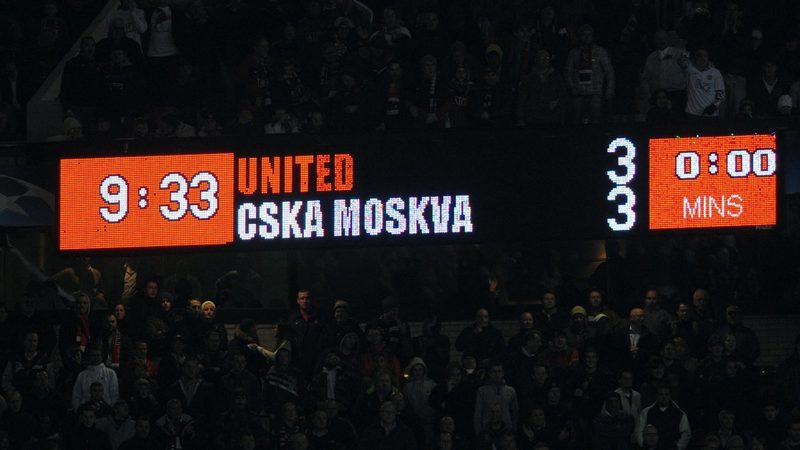
The away goals rule in football has long been a double-edged sword of sorts that can dramatically turn the tide of two-legged fixtures in European club football. As controversial as it may be, the away goals rule provides the thrill not seen in regular league-based competitions.
From Barcelona icon Andreas Iniesta’s late equalizer in the 93rd minute at Stamford Bridge in 2009 to Lucas Moura’s historic hat-trick goal in Amsterdam in the 2018-19 UEFA Champions League semi-final, the away goals rule has accounted for innumerable historic moments and results.
WHAT A FINISH. UNBELIEVABLE!
Lucas Moura #UCL | @SpursOfficial pic.twitter.com/eJBUacWQIw
— UEFA Champions League (@ChampionsLeague) May 13, 2019
However, all UEFA competitions - the Champions League and Europa League - will be adopting a new approach to decide the winner of tied two-legged fixtures from the 2021-22 season after the UEFA Executive committee decided to abolish the away goals rule.
What is the away goals rule?
The away goals rule is one of the three methods, besides extra-time and penalties, to declare the winner of a football fixture that finished as a draw.
The rule comes into effect in a fixture that features a home and away leg - a knockout game in the UEFA Champions League or Europa League. As per the rule, the team with the most goals ‘away from home’ wins the tie if scores are level on aggregate.
Here are a few examples of how the away goals rule is applied:
Example 1:
First Leg: Team A (home) 1-2 Team B (away)
Second Leg: Team B (home) 0-1 Team A (away)
Team B advances to the next round due to the away goals rule
Example 2:
First Leg: Team A (home) 2-3 Team B (away)
Second Leg: Team B (home) 0-1 Team A (away)
While the aggregate score is level (3-3), Team B scored the most goals away from home. Hence, Team B advances into the next round.
Example 3:
First Leg: Team A (home) 1-0 Team B (away)
Second Leg: Team B (home) 2-1 Team A (away)
While the aggregate score is level (2-2), Team A scored an away goal, whereas Team B didn’t score in the first leg. Hence Team A advances into the next round.
Example 4:
First Leg: Team A (home) 1-0 Team B (away)
Second Leg: Team B (home) 1-0 Team A (away) [after 90 minutes]:
Second Leg: Team B (home) 2-1 Team A (away) [after extra time]
While the aggregate score is level (1-1) at the end of regular time (90 minutes), both Team A and Team B go into extra time. While the aggregate score is 2-2, Team A progresses to the next by virtue of an away goal in extra time.
When was the away goals rule introduced?
The away goals rule was first introduced in the 1965-66 European Cup Winners' Cup. It was eventually adapted into the European Cup, now known as the UEFA Champions League.
The idea behind the away goals rule came into existence following a quarter-final between Liverpool and Cologne, which was settled by flipping a coin after three draws and a game postponement couldn’t decide a winner. Bill Shankly's men eventually won the game.
The first team to win a fixture by away goals rule was Budapest Honved, who squared off against Dukla Prague in the second round of the Cup Winners’ Cup. Budapest won the first leg 3-2 but lost the reverse fixture at home by a 2-1 scoreline. While the aggregate score was 4-4, Budapest qualified to the next round having scored three away goals.
Why is the away goal rule abolished?
The UEFA Executive Committee recently approved the proposal to abolish the away goals rule across all UEFA club competitions and the qualifying phases of its tournaments from the 2021-22 season onwards. This decision, based on the recommendation of the UEFA Club Competitions Committee and the UEFA Women’s Football Committee, will apply to football at the men, women and youth level.
“Statistics from the mid-1970s until now show a clear trend of continuous reduction in the gap between the number of home/away wins (from 61%/19% to 47%/30%) and the average number of goals per match scored at home/away (from 2.02/0.95 to 1.58/1.15) in men’s competitions,” UEFA stated in its release.
“In the UEFA Women’s Champions League, the average goals per game have remained very steady since 2009-10 with the overall average of 1.92 for home teams and 1.6 for away teams,” they added.
UEFA president Aleksander Čeferin said the UEFA Executive Committee decided after evaluating ‘the consistency across Europe in terms of styles of play, and many different factors which have led to a decline in home advantage.’
“The question of its (away goals rule) abolition has been debated at various UEFA meetings over the last few years. The impact of the rule now runs counter to its original purpose as, in fact, it now dissuades home teams – especially in first legs – from attacking, because they fear conceding a goal that would give their opponents a crucial advantage,” Ceferin said.
“There is also criticism of the unfairness, especially in extra time, of obliging the home team to score twice when the away team has scored. It is fair to say that home advantage is nowadays no longer as significant as it once was,” the UEFA President added.
Legendary managers Arsene Wenger and Sir Alex Ferguson had previously aired their discomfort over the rule. “Sometimes I think there is a counter-effect as teams play at home not to concede goals,” said Wenger in a 2014 interview to The Telegraph.
How will winners be decided if scores are level on aggregate?
If two teams score the same number of goals over two legs of their football match, the fixture will have two 15-minute periods of extra time at the end of the second leg.
If the contesting teams score the same number of goals or no goals during this extra time, the tie will go into a penalty shoot-out to determine the team that qualifies to the next stage of the competition.
Featured photo: AFP / Andrew Yates




















